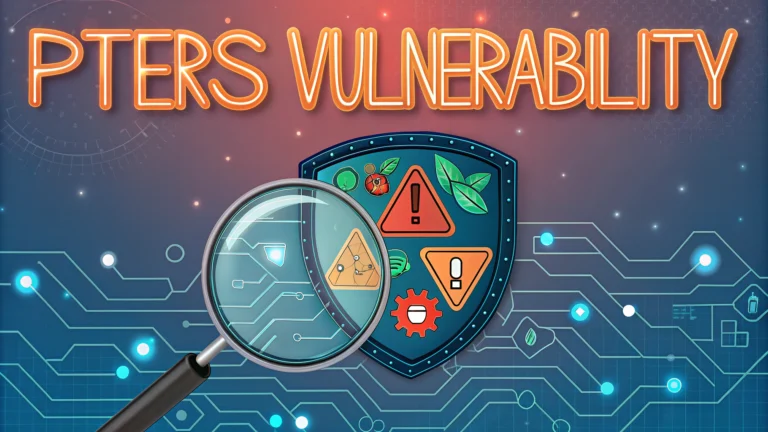A vulnerability analysis is a systematic examination of security weaknesses in an information system that helps identify potential entry points attackers could exploit.
This essential guide covers vulnerability analysis as part of the Penetration Testing Execution Standard (PTES).
Types of Vulnerabilities to Analyze
- Network vulnerabilities (open ports, weak protocols)
- Host-based vulnerabilities (OS flaws, misconfigurations)
- Application vulnerabilities (SQL injection, XSS)
- Missing security patches and updates
- Authentication and access control issues
Key Tools for Vulnerability Analysis
- Nessus – Professional vulnerability scanner
- OpenVAS – Open source vulnerability assessment
- Nexpose – Enterprise vulnerability management
- Qualys – Cloud-based vulnerability scanner
- Nmap with NSE scripts for targeted scanning
Vulnerability Analysis Process
- Active scanning of target systems
- Passive information gathering
- Service and version identification
- Configuration review
- Validation of findings
Tips for Effective Analysis
- Document all findings with screenshots and evidence
- Prioritize vulnerabilities based on risk levels
- Verify findings manually to reduce false positives
- Consider the business impact of each vulnerability
- Track vulnerabilities in a structured database
Common Vulnerability Scoring System (CVSS)
| Score Range | Severity |
|---|---|
| 9.0-10.0 | Critical |
| 7.0-8.9 | High |
| 4.0-6.9 | Medium |
| 0.1-3.9 | Low |
Reporting Guidelines
- Include technical details and remediation steps
- Provide clear risk ratings
- Add proof of concept where applicable
- Include affected systems and components
- Suggest realistic mitigation strategies
For professional vulnerability analysis services or training, contact organizations like SANS Institute (www.sans.org) or OWASP (owasp.org).
Remember to always obtain proper authorization before conducting vulnerability analysis on any systems or networks.
Risk Assessment Matrix
| Likelihood | Impact | Risk Level |
|---|---|---|
| High | High | Critical |
| High | Medium | High |
| Medium | Medium | Medium |
| Low | Low | Low |
Documentation Best Practices
- Use standardized templates for consistency
- Include detailed technical descriptions
- Maintain version control of reports
- Store findings in secure locations
- Track remediation progress
Compliance Considerations
- Align analysis with regulatory requirements
- Follow industry-specific standards
- Document compliance gaps
- Maintain audit trails
- Update procedures based on new regulations
Conclusion
Effective vulnerability analysis requires a systematic approach combining automated tools with manual verification. Success depends on proper documentation, risk assessment, and clear communication of findings. Regular updates and continuous monitoring ensure ongoing security improvement.
Key Takeaways
- Implement regular vulnerability assessments
- Use a combination of automated and manual testing
- Maintain detailed documentation
- Follow up on remediation efforts
- Stay current with emerging threats and vulnerabilities
FAQs
- What is PTES Vulnerability Analysis in penetration testing?
PTES Vulnerability Analysis is a systematic process of identifying security weaknesses in systems, networks, and applications according to the Penetration Testing Execution Standard (PTES). - What are the main components of PTES Vulnerability Analysis?
The main components include Active Testing, Passive Testing, Validation Testing, Research, and Documentation of discovered vulnerabilities and their potential impact. - What tools are commonly used in PTES Vulnerability Analysis?
Common tools include Nessus, OpenVAS, Nmap, Metasploit, Burp Suite, OWASP ZAP, Nikto, and Qualys for automated scanning and manual testing. - How does PTES Vulnerability Analysis differ from regular vulnerability scanning?
PTES Vulnerability Analysis is more comprehensive, including manual verification, exploitation attempts, and impact assessment, while regular vulnerability scanning typically only identifies potential vulnerabilities automatically. - What are the key phases of PTES Vulnerability Analysis?
The key phases are Vulnerability Discovery, Vulnerability Research, Attack Surface Mapping, Vulnerability Validation, and Impact Analysis. - How are vulnerabilities classified in PTES?
Vulnerabilities are classified based on CVSS scores, risk levels (Critical, High, Medium, Low), exploit difficulty, and potential business impact. - What documentation is required during PTES Vulnerability Analysis?
Documentation must include vulnerability details, proof of concept, affected systems, technical impact, business impact, and recommended remediation steps. - How are false positives handled in PTES Vulnerability Analysis?
False positives are manually verified through additional testing, proof-of-concept development, and validation techniques to ensure accurate reporting. - What role does compliance play in PTES Vulnerability Analysis?
Compliance requirements (like PCI DSS, HIPAA, ISO 27001) guide vulnerability analysis scope, testing methods, and reporting requirements. - How frequently should PTES Vulnerability Analysis be performed?
Analysis should be performed quarterly for critical systems, after major changes, or as required by compliance standards, with continuous monitoring in between.







